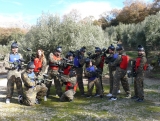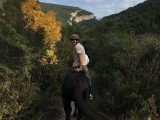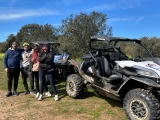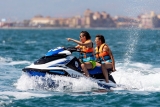As you might expect, skiing is a technical sport where having good physical condition is essential to properly enjoy the slopes. Many people forget this, but don't worry - we'll provide you with a series of tips that will help improve your abilities. Undoubtedly, if you implement these regularly, they'll help prevent injuries or setbacks when practising this sport.

This way, you'll most likely reduce the chances not just of bone or ligament fractures (which are often unavoidable), but of simple tendinitis, muscle strains or overloads caused by imbalance or something as common as muscle hypotonia - in other words, muscle weakness.
How to improve your abilities?
Maintain good muscle tone
The body is "a whole", and while having good muscle tone in the legs is important, it's equally crucial in the torso and arms. Therefore, in a skier's regular physical preparation, you should train as much muscle as possible to achieve the best physical condition.Regarding leg muscle development, it's important that the back of the thigh (hamstrings) is as balanced as possible with the quadriceps (front of the thigh). Remember that many muscle injuries result from an imbalance favouring the latter over the hamstrings.
Practice aerobic activities
You should bear in mind that most ski resorts are located above 1,500m above sea level, meaning the partial oxygen pressure is lower. This makes it harder for oxygen to reach your blood, increasing feelings of tiredness and fatigue. Therefore, it's also important to begin aerobic activities (running, swimming, cycling, aerobics...) at least one month before the season starts. When doing these, follow three key principles:
- They must be continuous - no stopping.
- They should last between 15 and 45 minutes (longer if you're in better shape).
- You should work at 70-85% of your maximum heart rate.
Flexibility
This is one of the most overlooked physical aspects, but it's advisable to always stretch for at least 10 minutes after skiing - without bouncing, to avoid muscle damage. The most important guidelines would be:
- Reach the position slowly until you feel slight tension in the stretched area.
- Hold the position for 20-30 seconds.
- Don't hold your breath - breathe deeply instead.
- Don't go beyond the pain threshold.
- Avoid bouncing movements.
- Practice daily for at least 10-15 minutes.
- Remember: it should be pain-free, sustained and relaxed.
Abdominal exercises
- Abdominals. Perform with your lower back always touching the floor. After finishing, do hip mobility exercises. Add one set per week.
- Lower back. Do few repetitions and stretch thoroughly afterwards. Don't go beyond horizontal.
- Vastus medialis. Don't exceed 45 degrees and always move slowly or at medium speed. Perform single-legged. Add one set weekly up to 6-8 sets. Weight depends on the machine and should allow you to complete the required reps.
Vastus medialis exercises
- Hamstrings. Perform single-legged without touching your glutes. Slow speed. Add one set weekly up to 6-8 sets. Weight depends on the machine and should allow you to complete the required reps.
Chest exercises
- Torso. Slow or medium speed. Increase to three sets in week three and maintain. Gradually increase weight weekly according to exercise. Weight depends on the machine and should allow you to complete the required reps.













